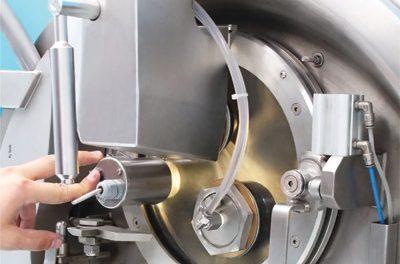In our defects article series, we have so far covered the defects occurring in knitted and woven fabrics and also in embroidery. Now, we are going to take up the defects that occur in our final garments, and how can we control or correct them.
Garment defects can be caused due to the use of defective fabric, workmanship defects and handling defects, and due to the defects in the trims and accessories being used in the garment.
Fabric defects
Part of the defects occurring in the final garment could be caused due to the defects in the fabric being used. In our previous articles we have discussed the defects that can occur in knitted and woven fabrics, their causes and possible remedies in depth.
Workmanship & handling defects
Garment manufacturing is a long process compromising of various stages, pattern making, spreading, cutting, sewing and finishing. Hence, defects can creep in any of or all of these stages, so we need to stay vigilant at each of these stages to ensure the desired quality of the final garment.
There are a variety of workmanship and handling defects that occur commonly in garments:
Pattern stage:
There are various defects in patterns that mar the garment quality. At times patterns or parts of the patterns can be missing from the marker, or if the marker wasn’t correctly labelled, we can end up with mixed garment parts, which can lead to garments with wrong size of parts. In napped fabrics, if patterns are not facing the right direction, garment design can be compromised.
Pattern not properly aligned to fabric’s grain line, or poor line definition can lead to inaccurate cutting. Skimpy marking to better utilise the fabric by not using the patterns’ outside edge for cutting, or moving pattern to squeeze into smaller spaces, can lead to patterns with worn out edges or faulty and wrong sized parts, which leads to puckering or pleating when the garment parts are sewn together as they are not of correct sizes. Missing or displaced notches and drill marks, not enough knife clearance, wrong check matching, or wrong check boxing, all can hamper the quality of the final garment.
Spreading stage:
Narrow fabric lay, misaligned plies, or not enough plies, all can lead to missing bits in the garment parts. Incorrect ply tension leads to size variations in the parts. Also, while spreading, incorrect ply direction, splicing errors, distortion in lay due to static between plies can lead to incorrect cutting, especially if the fabric has checks or stripes.
Cutting stage:
Failure to precisely follow the marker lines, leaning straight knife while cutting, using round knife on a considerably high speed, misplaced or incorrect notches and drill marks, frayed or fused edges due to blunt knife, faulty marker placement, etc. lead to distorted garment parts or missing bits which leads to uality issues at later stages.
Some of the defects that occur due to faulty workmanship and handling are:

Shade variation
Causes
- Shade variation in fabric
- Parts mixing
Remedies
- Fabric inspection and quality monitoring
- Proper numbering and bundling processes

Seam puckering:
Bunching of fabric in a seam is seam puckering
Causes
- High thread tension
- Faulty fabric feeding
- Using wrong thread and/or needle
Remedies
- Maintain proper thread tension while sewing
- Fabric should be fed through the machine at a constant rate
- Choosing appropriate needle and thread thickness as per the fabric requirements

Open or broken seams:
Openings or unstitched parts in seams
Causes
- Faulty sewing practices
Remedies
- Ensuring the garments are folded property and pressure is not being applied on seams
- Proper sewing operator training
Broken stitches
Causes
- Improper thread feed to machine
- Incorrect thread tension
- Abrasive handling of the piece
Remedies
- Training workers to handle the garment properly
- Thread trimming should not be done aggressively
- Manage the thread feed and tension
Skipped stitches:
Irregular stitches along the seam
Causes
- Use of bent needles
- Incorrect tension in sewing and bobbin thread
Remedies
- Use reinforced needles
- Set the needle guard to ensure needle clearance
- Manage thread tension
- Select proper thread twist and thickness
Wavy seam:
Wavy Seam occurs when the seam is not straight
Causes
- Rough handling when cutting and sewing
- Tension applied on part while sewing is high
- Wrong needle size
Remedies
- Ensure proper material handling
- Train operator to not pull excessively while cutting or sewing
- Choose the correct needle size

Misaligned buttons and buttonholes
Causes
- Error made by the machine operator
Remedies
- Internal QC checks
- Operators should be aware of the design and dimension specifications
Untrimmed threads:
Extra lose thread appearing along the seam
Causes
- Tail ends left untrimmed post sewing
Remedies
- Trim the threads using clipper or trimmer

Out of tolerance sizing:
The dimensions or measurements of the garment parts are not within the tolerance limits defined by the buyer
Causes
- Cutting and sewing operators having incorrect information
Remedies
- Ensure the operators have the dimension specifications
- Ensure correct pattern making
- Inspect first piece form every size in an order
Trims & accessory defects
At times the use of wrong colour or size of trims or embroidery or wrong placement of the same can also make the garment defective. The defects that can appear in embroidery have been discussed in depth in our previous article of this series “Embroidery defects.”
Other than embroidery defects some of the other commonly occurring trim defects are:
Broken trim:
Use of broken or inoperable trim or if the trim is insecure
Causes
- Rough trim handling
- Rushing through production process
Remedies
- Internal QC checks
- Good quality trims
Wrong trim:
The trim used differs in colour or size, or might be missing when compared against the buyer’s specification
Causes
- Rough trim handling
- Rushing through production process
Remedies
- Internal QC checks
- Good quality trims
Trim bleeding
Causes
- Trim quality not as per specification
- Garment finishing not appropriate
Remedies
- Internal QC checks
- Good quality trims
- Garment label should contain care instructions
- Garment finishing should follow the manufacturer’s care instructions for trim
With the knowledge of the commonly occurring defects and their causes and remedies we can take measures to alleviate the risks of quality fallouts in our orders. Keeping the above pointers in mind, we can align the quality inspection process in our factories to produce quality output.

















